Project Blizzard: An ‘old’ mountain bike gains a second life on the trails
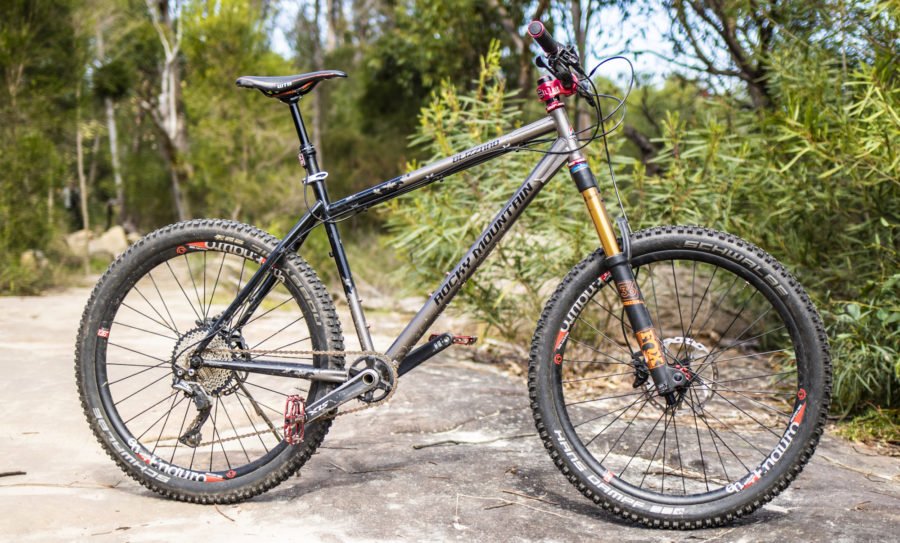
It used to be an anomaly: in this modern world of efficient-pedalling dual suspension mountain bikes that comfortably negotiate terrain ranging from baby-smooth XC/Flow trails through to punishing Enduro and even Downhill-esque descents, rarely would you see a hardtail MTB out on the trails.
Well, at least it was until the past couple of years. The resurgence of hardtail MTBs – most notably those built out of ‘old-school’ steel, and skewed more toward trail and all-mountain riding, rather than XC – has come on fast. Norco’s Torrent HT and Kona’s monster Honzo ESD are just two of the latest, joining brands such as UK-based Cotic and Stanton, along with Canada’s highly regarded Chromag, in offering bikes that are tough, fast, forgiving, up for anything and thanks to steel’s inherent robustness, will be still providing plenty of fun on the trails decades later, proving that old adage that “steel is real” well and truly.
The combo of a bike frame made from a material regarded as ancient by the ignorant, with a modern drivetrain, forgiving wheels (again, notably in 29-inch size), dropper posts, long-travel forks and the modern MTB geometry trend of long, low and slack, and suddenly you have a bang-for-your-bucks rig that is super-tough, super-simple to work on (no pivots, rear shock, etc.) and just simply awesome fun.
It was this that led me to head down the MTB hardtail path a couple of years ago, although I approached this ‘hardtail resurgence’ in a slightly different way…
Retro rarity
I have always been a fan of steel hardtails, partly due to my – ahem – not insignificant age, meaning I was around for the dawn of mountain biking, exploring numerous trails on my fully-rigid stone-grey Diamondback Topanga back in the mid/late 1980s. That bike, fully rigid, with no suspension, taught me plenty about line selection on trails. Even though it had since disappeared from my garage (it’s still being used as a commuter by its third owner), I had never forgotten the fun of a hardtail; how it engages the rider more with the trail.
When it came time to look for a steel hardtail again, I was after something a little different to the norm; I had dabbled with a couple of Niners (a SIR 9, built with smooth Reynolds 853 steel and the ROS 9 – a 4130 chromoly all-mountain rig) but wanted something that really brought me back to those earlier days of shorter wheelbases, flickable frames and – dare I say it – 26-inch wheels. I wanted to (I guess) prove that such a bike, with all those ‘old-school’ aspects, could still razz trails with the latest and greatest.
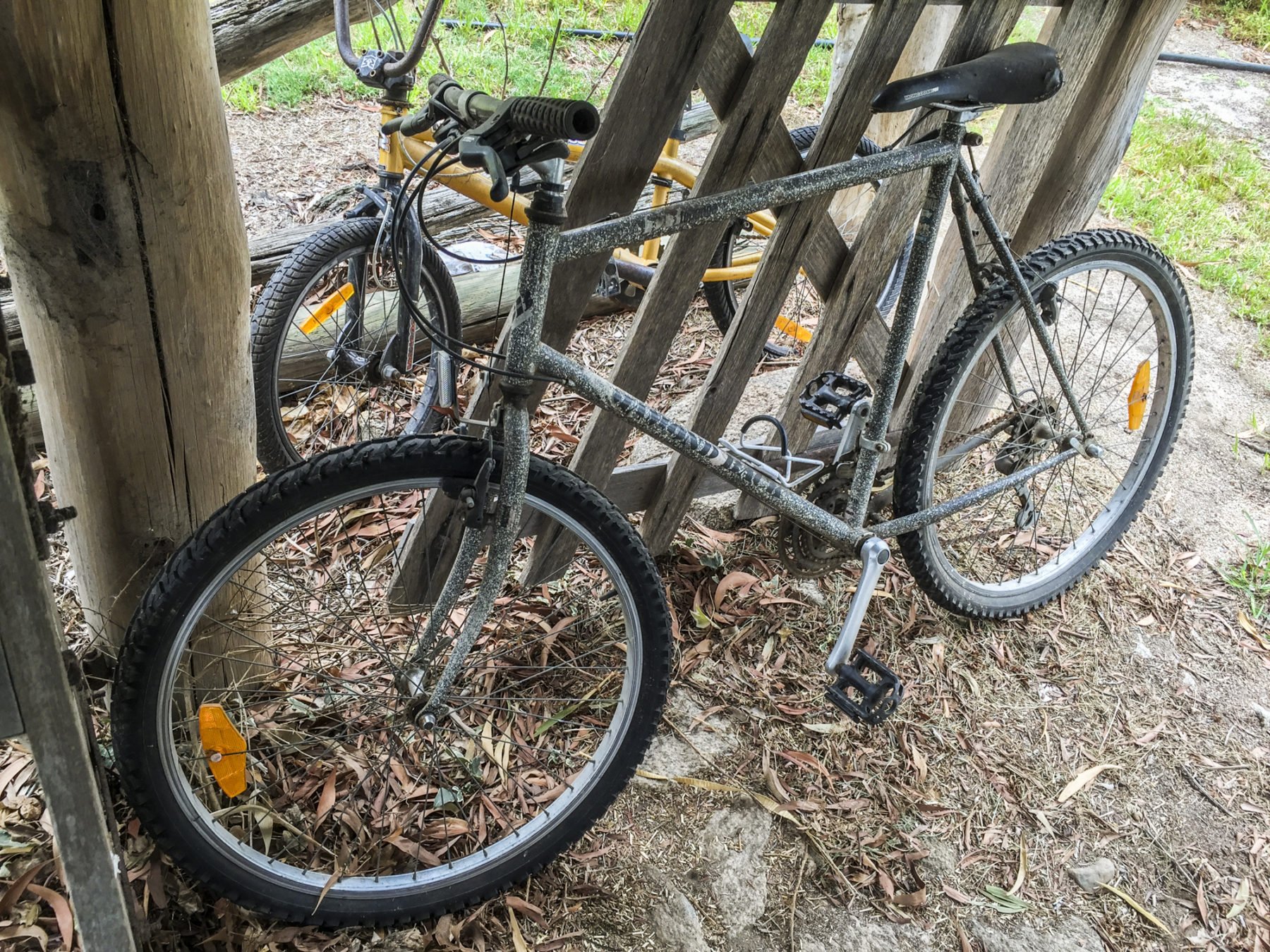
So it was that, after first sourcing a New Old Stock (NOS) 2010 Rocky Mountain Blizzard frame (the famous Canadian brand’s last XC steel hardtail in beautiful, springy Columbus Zone steel tubing, no less) for my wife to ride, that I scored big-time with what I thought could be the ideal hardtail all-rounder : another Rocky Mountain Blizzard – but this time, the ultra-rare 2011 Long Travel (LT) version, built with beefier (albeit slightly stiffer) 4130 chromoly steel, and which could take a fork of up to 150mm travel. This all-mountain variant of the Blizzard was only produced as a frame-only by Rocky Mountain for one year, in very limited numbers, so when I spotted a very tidy Large-sized example over in (where else) British Columbia, Canada, it only took a few emails and a tiny amount of haggle, before a friend of mine was winging from BC with some additional flight luggage.
At this point, I will understand the question you ask of why, in 2018 (when I started this project), I would want to return to the seemingly redundant 26-inch wheel-size, and also why I would want to build up a trail/all-mountain hardtail frame that also featured another couple of ‘redundancies’: a straight-steerer head-tube, and a QR 135mm rear axle? I wondered about that myself but have always been one to travel the slightly different road – while fully realising, in this case, that tracking down new/second-hand components to fit those out-of-date standards was probably going to be either half the fun or complete my transformation into a fully-fledged madman as I lost the battle to stay sane during what could have been a truly fruitless search.
Beginnings of a dream
The idea behind this Blizzard LT build was, initially, to scour second-hand markets for the required components; I had thought (as did a lot of others) that there was minimal – if any – possibility of finding a new straight-steerer fork for the bike and was prepared to do the hard yards of being patient. After a couple of months, patience went out the window and, in what was a mild fit of madness and desperation, I jumped on FOX’s fork selection page. It was here I copped my first welcome surprise: the US suspension giant still actually made a couple of forks for a 26-inch MTB with a straight-steerer headtube, one of which was the mighty FOX Float 36 Factory, albeit in 160mm-travel form, which was a bit longer than I wished as the Blizzard’s recommended fork length maxed out at 150mm. However, it only took a quick chat with FOX’s Aussie distributor Sola Sport to confirm they could drop it to my preferred 140mm (note: this may change at some point), and I was super-stoked. What I had envisaged being the most difficult part of the build had been sorted, albeit not cheaply. That resolved, it was time to turn my attention to my next potentially painful – and expensive – search: a 26-inch all-mountain wheelset.
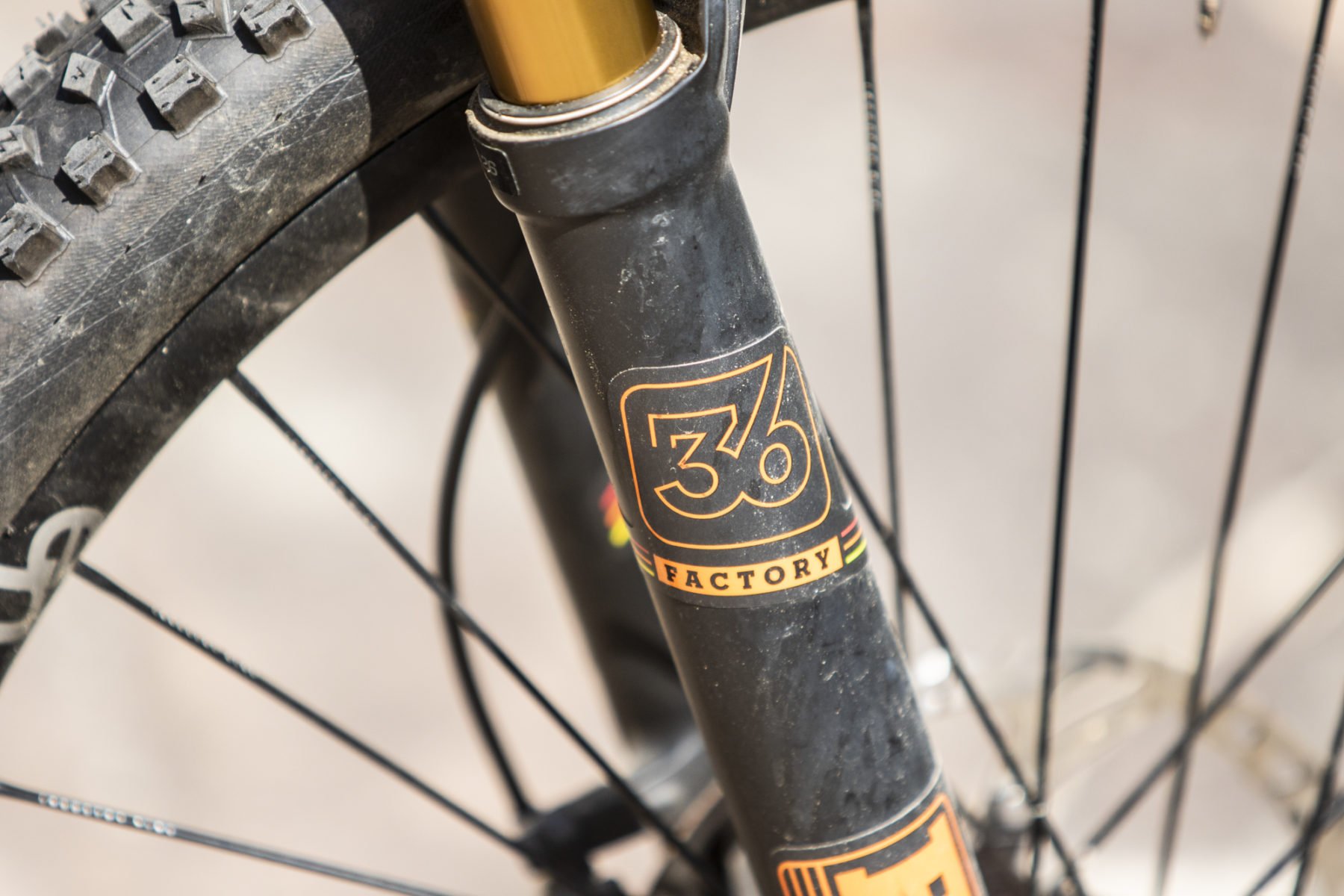
The FOX 36 offers plenty of plushness combined with support. 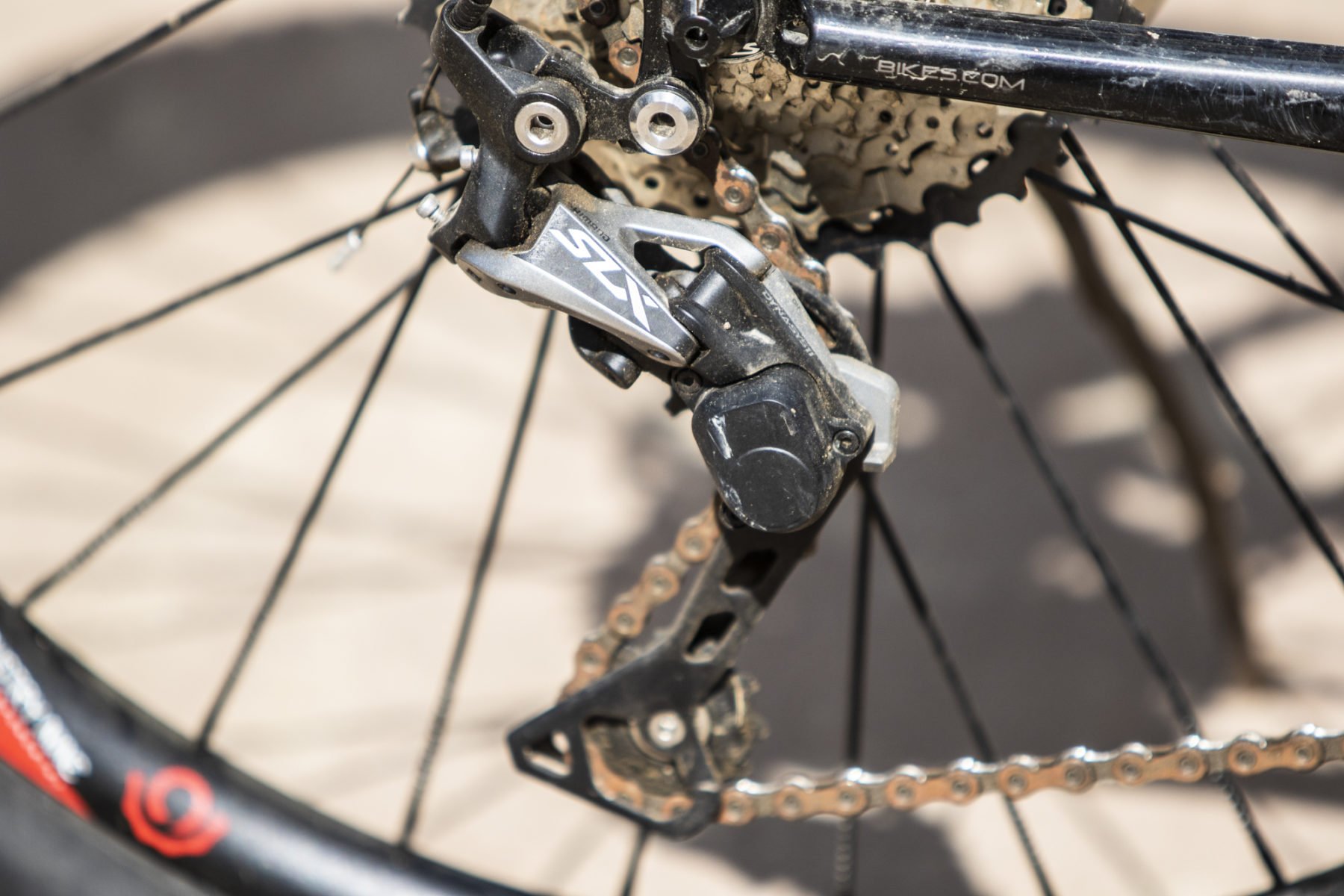
The Shimano SLX 1×11 drivetrain has been faultless.
Industry rules
An all-mountain hardtail relies on a number of factors to provide a good ride and handling experience: the frame material is one, with steel regarded as more ‘forgiving’ than alloy or even carbon, and within that are different types of steel as well), an efficient fork (it’s the only form of ‘suspension’ on a hardtail – besides your arms and legs, of course), and a wheelset that offers both compliance and strength. The 4130 steel tubing is not the most forgiving of the steel variants out there (Columbus Zone and Reynolds 853 are probably viewed as the most comfortable), but it is still notably mutes trail impact.
Wheels were tricky. The choice of 26-inch wheels that offer decent width these days is very thin; I was after as much wheel width/tyre width as I could fit in the relatively narrow chainstays of the Blizzard to help dampen the rear end. Most 26-inch wheelsets I found on the second-hand market were only 19-21mm in width, and probably not up to coping with me hucking the bike off bigger drops.
It was at this point that I realised my budget was about to explode – and in a big way – and I could have quite easily pulled the pin. But, no, instead of doing the sensible thing, I thought if I was going to blow a large portion of it, I might as well go the Full Monty…
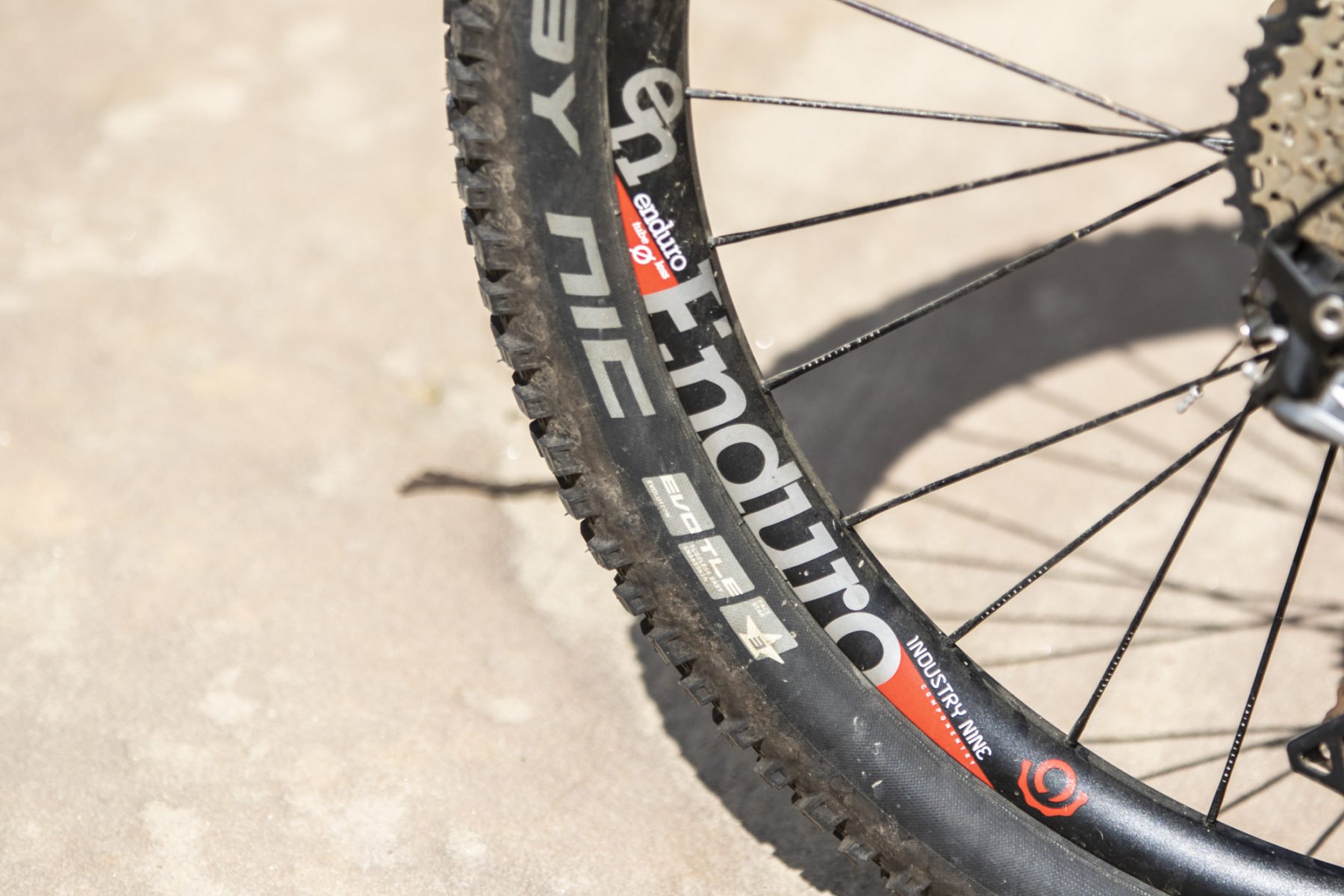
The Industry Nine Torch Enduro wheels feature 32 spokes and a 26mm internal width. 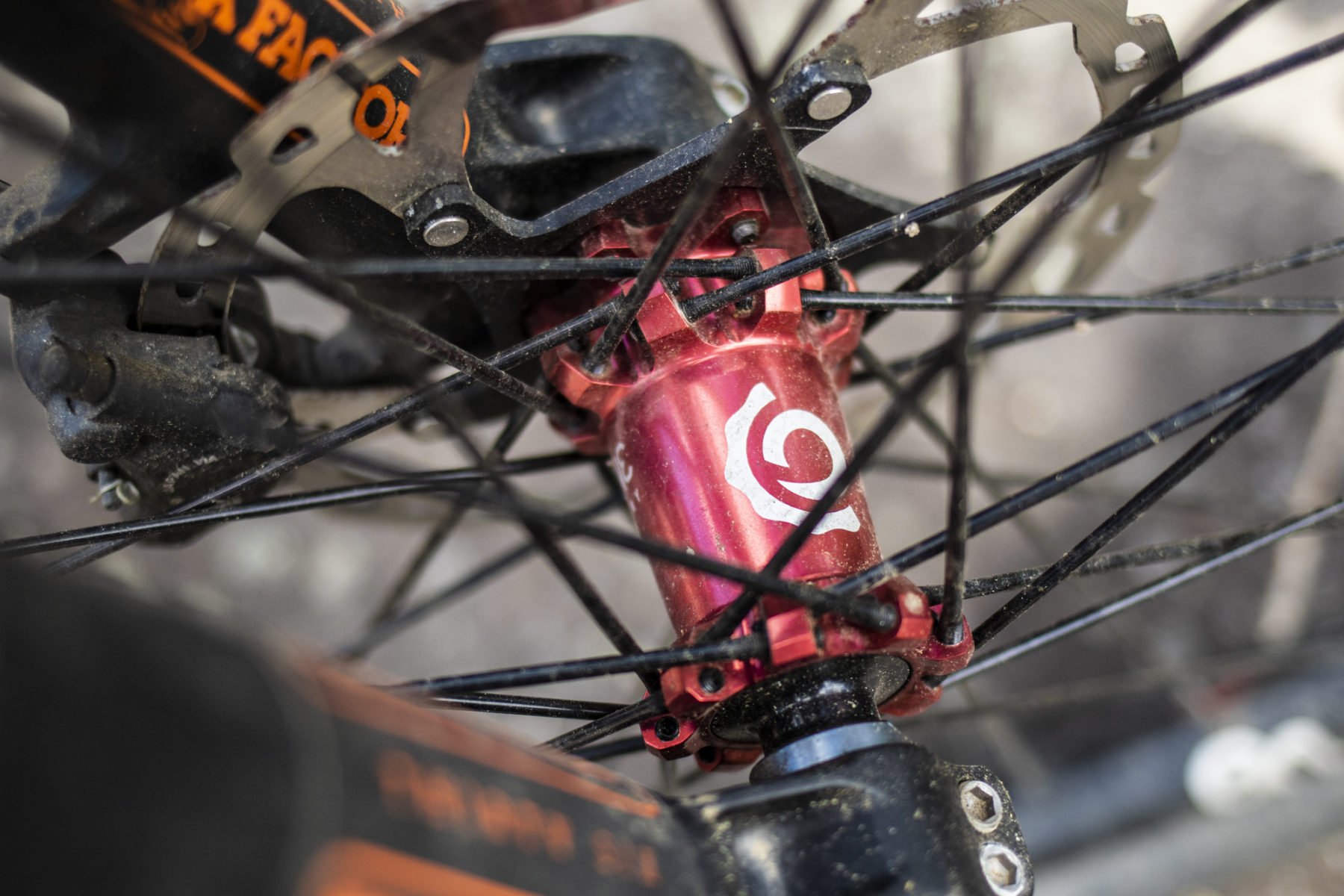
A cool option with Industry Nine wheels is that you can anodise parts, such as this hub.
I am guessing it had been a little while since Industry Nine’s Australian distributor, Dawson Sports, had received an enquiry about a custom-build set of 26-inch wheels; the Industry Nine Torch Enduro 32 Hole hoops, to be exact. Indeed, Brent Dawson seemed both surprised and a tad impressed by the dream build idea he was hearing from the madman on the other end of the phone when I rang.
Industry Nine has a well-deserved reputation for its high-engagement wheel hubs and wheelsets. These Torch Enduros were ideal, with a 26mm internal diameter (30.5mm outer) a three-degree engagement and six-pawl mechanism. Uniquely, Industry Nine offers wheel buyers the option of anodising, whether that is just the hubs (such as I did) or even the butted aluminium spokes as well. Pretty colours aside, these wheels are built tough, but still light (weighing in at 1610g) and have a welcome 113kg rider weight limit. Plus, they were available in 135mm QR rear hub format. Yes, these were pretty damn expensive but as this bike was built as a true ‘keeper’, I was sort-of okay with the pricing. Wrapped around the wheels are some Schwalbe Hans Dampf 26×2.35 tyres up front, and Nobby Nic 26×2.35 rubber out back.
Adding up essentials
After the big expense of forks and the Industry Nine wheelset, the Blizzard project was starting to resemble a bad day at the stock market. This meant refocusing on the fact that the rest of the components needed must offer plenty of bang for my ever-decreasing bucks – yes, I was still delusional in terms of wanting this build to not go overboard…
The drivetrain and brakes were a no-brainer: I am a huge Shimano fan and, back in 2018, Shimano had just released its SLX 1×11 drivetrain with that big 46-tooth ring on the rear cassette. Add in a set of SLX brakes (180mm rotors front/rear) and I was nearly there.
For the cockpit, I went for Chromag’s OSX bars and a 50mm Ranger stem (in red to match the hubs), along with a schmick Chris King headset and – ideal for my big size 12s – a sweet set of Chromag Scarab flat pedals (also in red). Finally, I fitted a 125mm KS Lev dropper post – it was, at the time, the longest dropper in the narrow seat-tub diameter the Blizzard possessed.
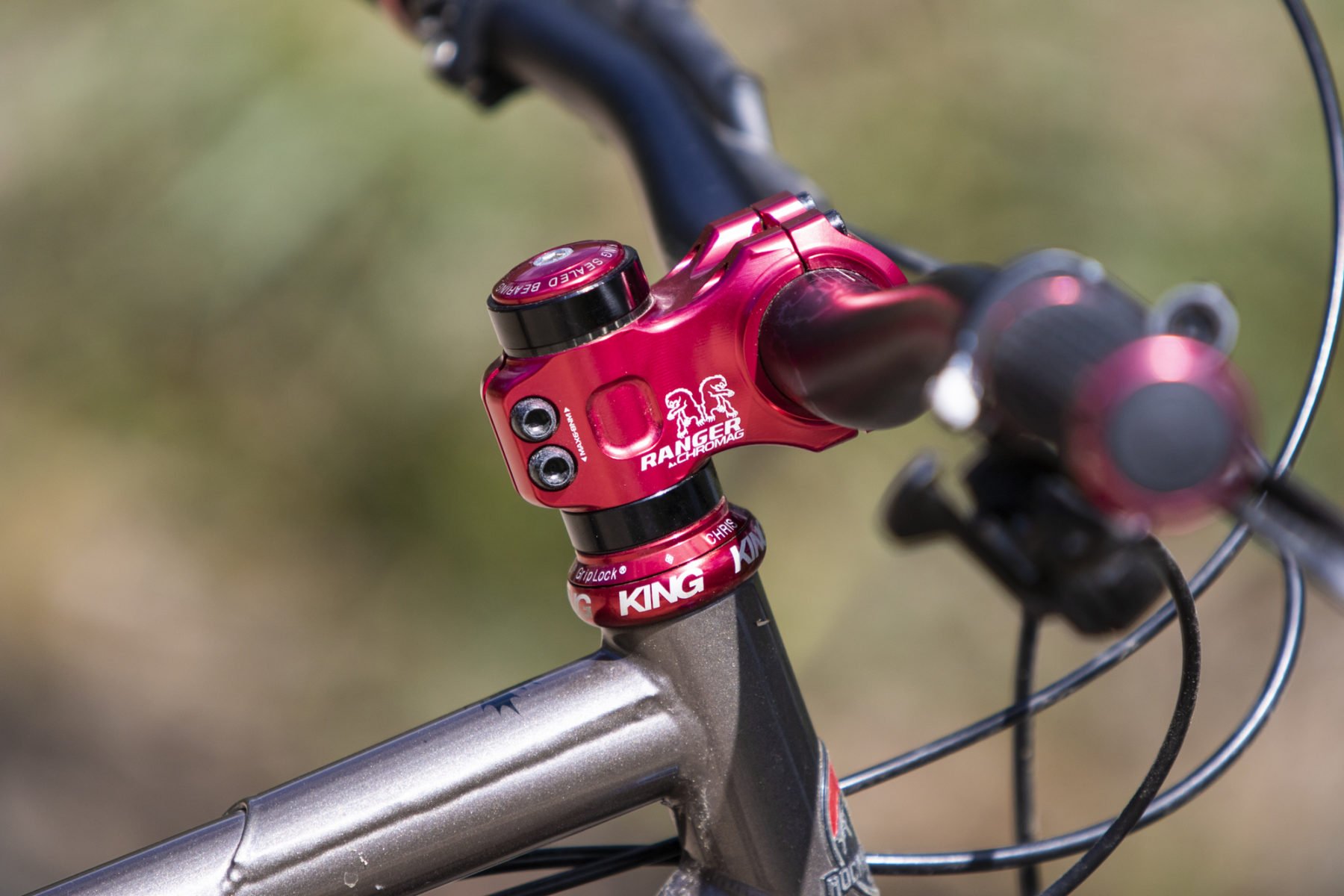
The Chromag Ranger 50mm stem adds colour and reliable functionality. 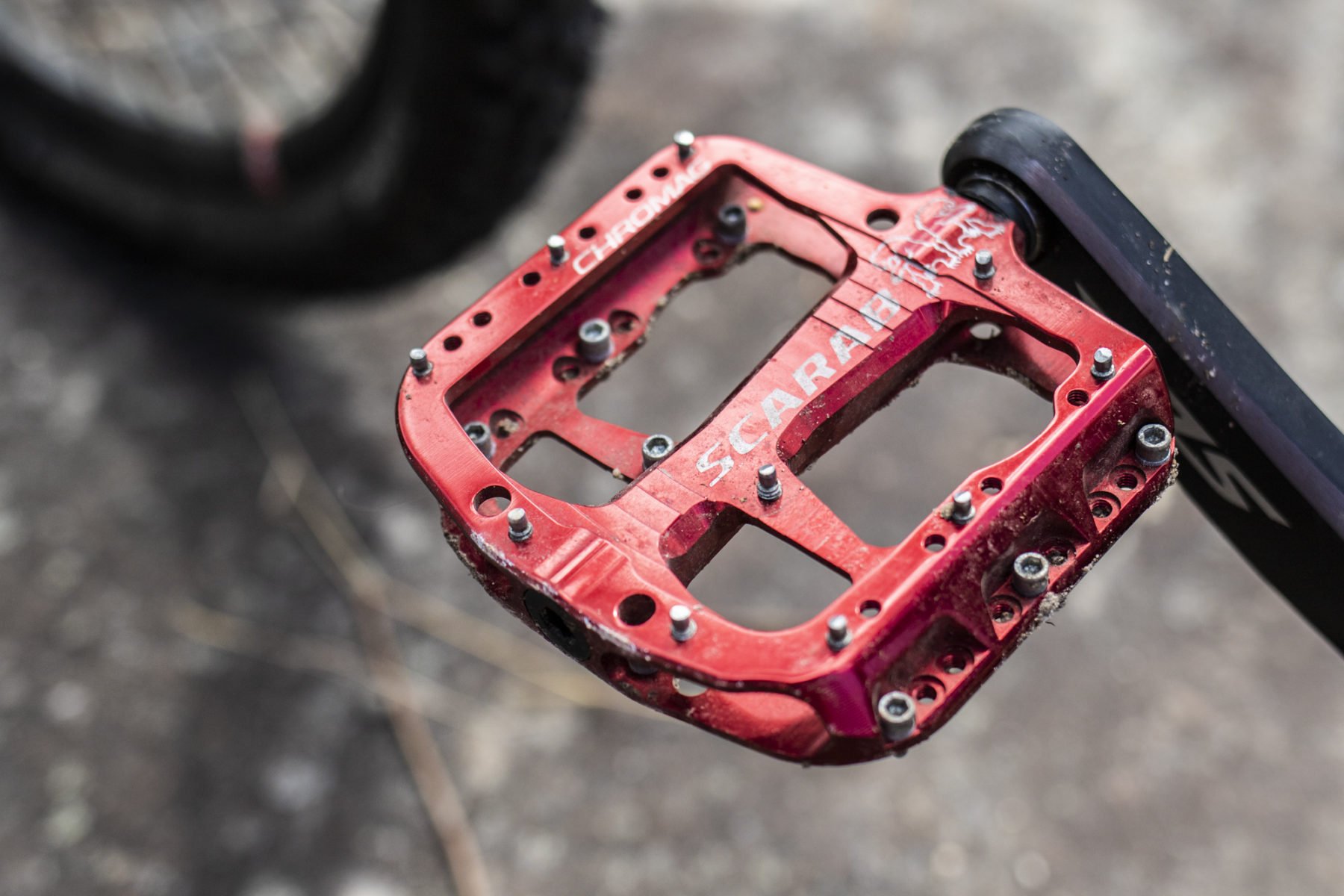
The Chromag Scarab flat pedals offer plenty of grip.
To say the build project (and cost) became bigger than Ben-Hur is an understatement. But, thankfully, the actual build itself, by master bike mechanic (and good mate) Tim Robson, was straightforward. Once I saw Robbo snap out a wheelie as part of his ‘shakedown’ after the bike had been built – and saw his huge grin – I knew all that component chasing, dreaming, and way too much money had been worth it…
Making trails new and exciting again
I am fortunate to live near one of Sydney’s most popular MTB trails – Manly Dam – and also frequently visit the excellent trail network at Tathra, on the NSW Sapphire Coast quite often (Tathra is just up the road from my parents’ home at Eden). So, it has been mainly on these two very different trail networks that the Blizzard LT has been ridden: a mix of gnarly sandstone and steep drop-offs, along with sandy, flowy coastal trails.
My other bike is a dual-suspension 29er (a Pivot Trail 429, see our initial review on that bike here), so every time I jump on the relatively ‘small’ hardtail, it does take a while to readjust my riding style. Thankfully the Blizzard LT is a forgiving bike; that FOX 36 eats up the choppy, rocky sections and drops on Sydney’s Northern Beaches well, with the steel frame and those Industry Nine wheels taking a bit of sting out of the ride. The bike’s short wheelbase ups the fun factor immensely; the more you fling the bike about, the more fun you have on it. This is counterbalanced somewhat by having to be way more focused in terms of both overall bike handling and allowing for the smaller-diameter wheels’ reticence to roll over everything – although that just gives me an excuse to jump off more stuff.
I have no qualms taking it out in the crappiest of conditions; a hardtail’s appeal is its simplicity of construction – no pivots and few moving parts to get blocked up/damaged with grit, dirt, sand, etc. – and even though I do grimace when I get a small paint-chip, I know that, when it finally looks too scratched-up, I can simply sandblast it back to bare metal and then repaint it.
A few changes may happen, though. The 50mm stem is going to be swapped out for a 60mm to give my long-ish arms and torso a bit more ‘room’, but also to compensate slightly for a planned-for increase in fork-travel, from 140mm to 150mm. This will slacken the head angle a bit as well, something that is always welcome on the Northern Beaches’ gnarly, steep trails. The other tweak may be fitment of a carbon bar, for a bit more vibration damping up front.

Overall, I am stoked with the Blizzard LT. I try not to think how far over-budget I did go with this build but for me the end-result of a bike that I will likely keep forever – and that is simply an absolute hoot to ride – makes that initially frightening investment worthwhile, and it should pay me back with many years of reliable (and fun) service.
Yes, I still look at modern hardtail MTBs and think ‘maybe’ – especially some of those Stanton and Cotic models built with so-sweet Reynolds 853 steel – and I also note Rocky Mountain now produces the Growler hardtail, albeit only in an aluminium frame. However, the absolute grin factor I experience every time I jump on board the Blizzard LT, whether for a quick blast around Manly Dam, a day on the trails down at Tathra, along the lakeside boardwalk near my parents house, or just to ride with the kids to school, means it would take something incredibly special for me to contemplate parting with this grin-inducing steel bruiser.


